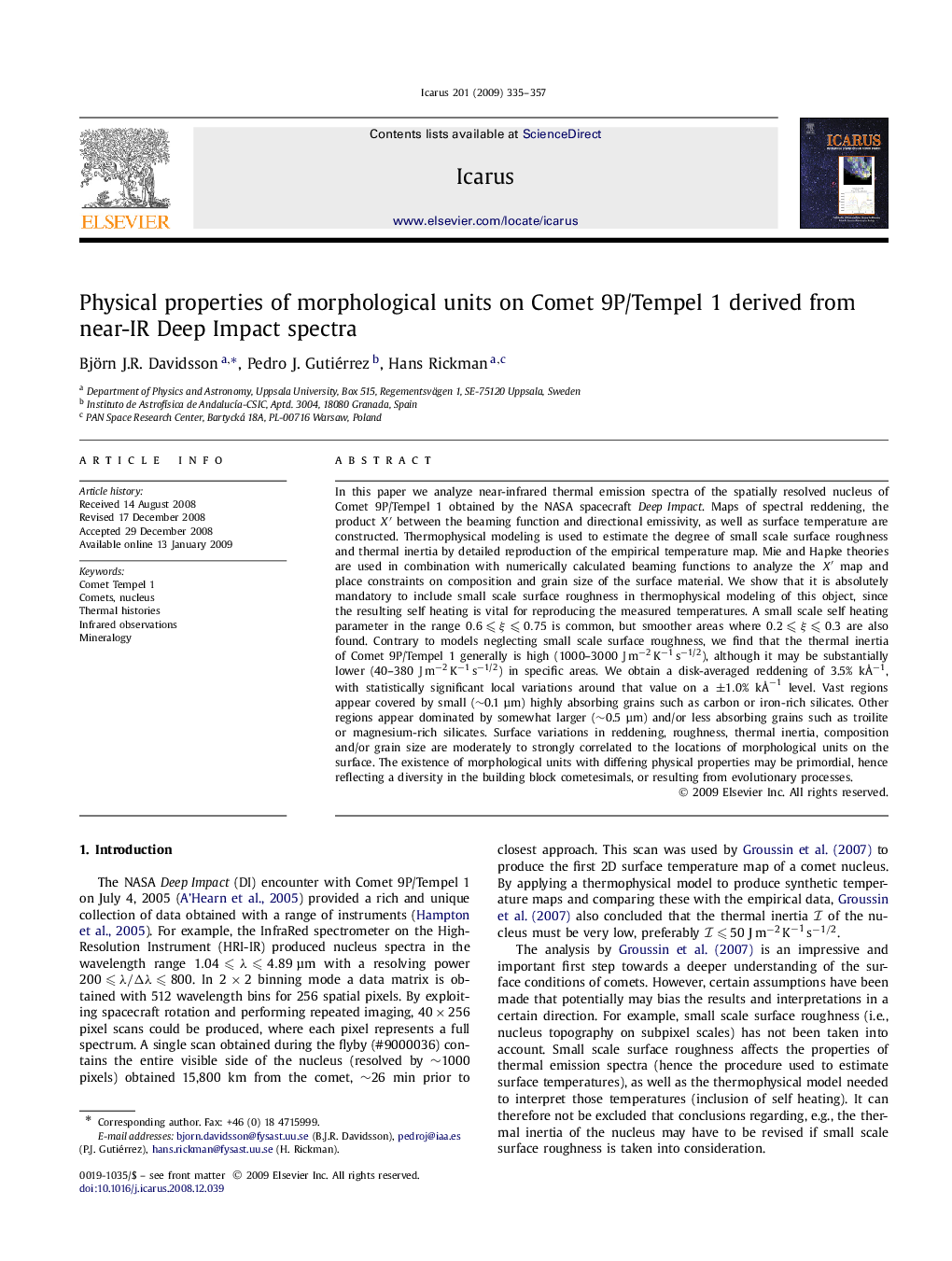| کد مقاله | کد نشریه | سال انتشار | مقاله انگلیسی | نسخه تمام متن |
|---|---|---|---|---|
| 1775341 | 1021190 | 2009 | 23 صفحه PDF | دانلود رایگان |

In this paper we analyze near-infrared thermal emission spectra of the spatially resolved nucleus of Comet 9P/Tempel 1 obtained by the NASA spacecraft Deep Impact . Maps of spectral reddening, the product X′X′ between the beaming function and directional emissivity, as well as surface temperature are constructed. Thermophysical modeling is used to estimate the degree of small scale surface roughness and thermal inertia by detailed reproduction of the empirical temperature map. Mie and Hapke theories are used in combination with numerically calculated beaming functions to analyze the X′X′ map and place constraints on composition and grain size of the surface material. We show that it is absolutely mandatory to include small scale surface roughness in thermophysical modeling of this object, since the resulting self heating is vital for reproducing the measured temperatures. A small scale self heating parameter in the range 0.6⩽ξ⩽0.750.6⩽ξ⩽0.75 is common, but smoother areas where 0.2⩽ξ⩽0.30.2⩽ξ⩽0.3 are also found. Contrary to models neglecting small scale surface roughness, we find that the thermal inertia of Comet 9P/Tempel 1 generally is high (1000–3000 J m−2 K−1 s−1/2), although it may be substantially lower (40–380 J m−2 K−1 s−1/2) in specific areas. We obtain a disk-averaged reddening of 3.5% kÅ−1, with statistically significant local variations around that value on a ±1.0% kÅ−1±1.0% kÅ−1 level. Vast regions appear covered by small (∼0.1 μm) highly absorbing grains such as carbon or iron-rich silicates. Other regions appear dominated by somewhat larger (∼0.5 μm) and/or less absorbing grains such as troilite or magnesium-rich silicates. Surface variations in reddening, roughness, thermal inertia, composition and/or grain size are moderately to strongly correlated to the locations of morphological units on the surface. The existence of morphological units with differing physical properties may be primordial, hence reflecting a diversity in the building block cometesimals, or resulting from evolutionary processes.
Journal: Icarus - Volume 201, Issue 1, May 2009, Pages 335–357